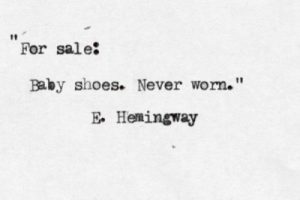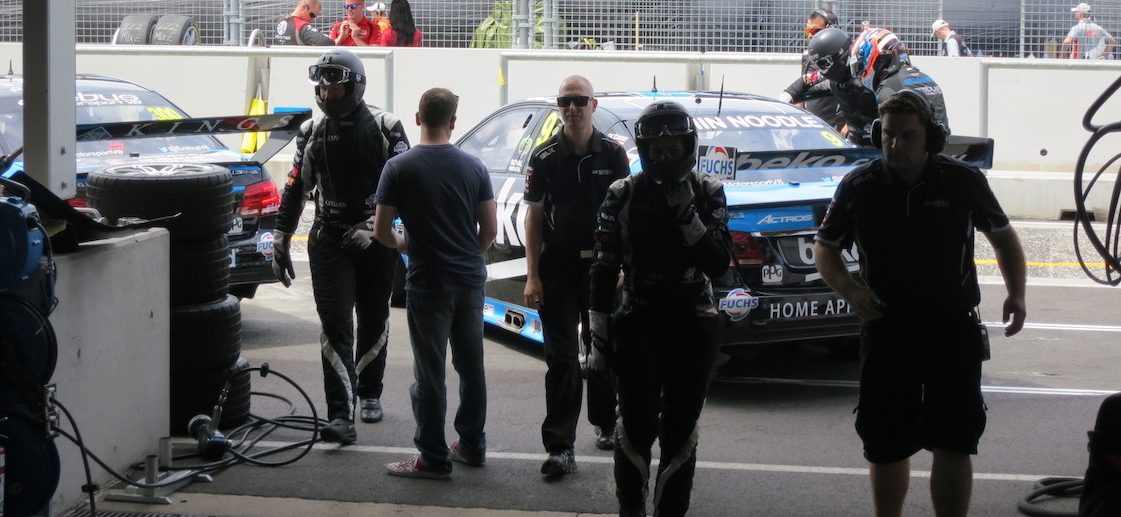WHY STORYTELLING IS IMPORTANT TO YOUR BRAND
“Stories constitute the single most powerful weapon in a leader’s arsenal.”
—Dr. Howard Gardner, professor Harvard University
For today’s lesson, let’s replace “leader” with “brand” or “marketer”.
Leaders have used stories throughout history – many ships have been launched for leaders, greedy for new land – and many boats have been stopped by leaders too (don’t worry I won’t let my point of view on the Stop The Boats political saga drown us before we begin).
You can tell your story once or over and over again, and you can tell it in a few words, or a few hundred thousand. Did you know: A Tale Of Two Cities has 135,000 words and is the most sold book of all time.
Notorious drinker and never one to waste words, Ernest Hemingway was in a bar three sheets to the wind when a fellow drinker who was green with envy over the attention he was getting from the ladies, challenged him to write a six word short story that could make you cry. The next day, hungover and bleary eyed, Hemingway typed up the below and won the bet:
“For Sale: Baby shoes. Never worn.”

What a great story! Not just the six words, but the fact that it was Hemingway, the famously simple worded pathos in his stories shines through in those six words – although the trouble is, Hemingway didn’t write it. Just like Newton was never hit on the head with an apple that lead to his thoughts on gravity (a story so great it led to the name of one the best known brands and great storytellers in their own right).
As a marketer, you might only have enough space for six words. Coca-Cola went from 6 words to 5 in the 90’s. “You can’t beat the feeling” to “You can’t beat the real thing.”
Coke owns words like life, feeling, real, enjoy and happiness.
These words are crucial to their story telling. Which is why those terms come to mind when you think of Coke, and not obesity, type 2 diabetes and tooth decay.
If you ask people to think of Coca-Cola advertising or marketing campaigns, most in Australia think of sky surfing, Christmas or the your name on a bottle campaigns. These all tell a story about Coke and the way it makes you feel. But my favorite is the story teller – it’s blatant, it’s obvious, and if it was set up in any other way, it would feel like a 1950s sponsored ad but it has stuck with me since I was 10.
In short, stories have staying power and can create an emotional response in the audience that linger in their hearts and minds for years.
You can use stories to:
• detail events
• make concepts accessible to a new audience
• change minds
• increase stronger memories
• create attachment to you and your brand through all of the above
You may have heard that there are only a handful of story types in the world, whether you subscribe to Joseph Campbell’s Monomyth, Kurt Vonnegut’s 6 story shapes (to see three of his shapes click, watch it, it’s five minutes, all gold), Christopher Bookers’ Seven basic plots or any other number of numbers (see, writers have been doing listicles* forever).
No matter how many types there are, it’s important to remember there is no end to the variances you can create. Variance is the key word here. You may have been told many times that there is a reason why your business exists and it’s because you are offering something different to your competitors. Find your difference/s and extrapolate. Tell your story, create a connection with your audience and let clients know that you offer an experience or product that will make their life easier, better and happier – like a relaxing squirrel massage.
In part 2, we will expand on the art of story telling by focussing on what makes content bad (clue: it’s not a misspent youth).
*not sure what a listicle is (you’ve been reading them for ever): it’s an article that forms a list, wholly or partly. Bustle has an awesome article on the subject.






